|
|
|||
THIS WEEK at HILTON POND
1-7 January 2007
Installment #343---Visitor #
(Back to Preceding Week; on to Next Week)
|
Only a few places remain for our upcoming |
|
THE NATURAL CALENDAR
At Hilton Pond Center we have a laissez-faire policy of land management, mostly letting nature take its course--especially with regard to vegetation. On purpose we don't plant much, being cursed with "black thumb," and we seldom remove greenery from the landscape unless it grows across our trails and/or happens to be a foreign invasive. We've always pruned trail intruders judiciously, but these days go after exotics with a vengeance, whacking them to the ground wherever they sprout. Although keeping invasives at bay requires constant vigilance and goes on year-round, there are other tasks at the Center that follow a "natural calendar"--a calendar we correlate with human holidays so we won't forget to do what we need to do when we need to do it. Our "natural calendar" also reminds us of off-grounds programs we give or attend, or of events we don't want to miss. In light of the many phenology-related questions we get via phone or E-mail, it occurred to us it might be useful to share the Center's "natural calendar" with our Web site visitors as 2007 begins.
All text & photos © Hilton Pond Center JANUARY 1--NEW YEARS DAY CLEAN & REPAIR WOOD DUCK BOXES Shortly after we moved to what is now Hilton Pond Center, we picked up six cedar Wood Duck boxes from the South Carolina Department of Natural Resources. FEBRUARY 2--GROUNDHOG DAY CELEBRATE GROUNDHOG DAY Whether or not you go to Punxsutawney PA to find out if rodent weathercaster Phil sees his shadow, any true nature lover is obligated to celebrate Groundhog Day on 2 February as the most important of all nature holidays. GO TO COSTA RICA Our last Ruby-throated Hummingbirds leave Hilton Pond Center by the third week in October, so by Groundhog Day our hummer withdrawal symptoms have become pretty severe. In part to relieve this condition, we offer February trips to Guanacaste Province in sunny Costa Rica, where citizen scientists (i.e., anyone interested in hummingbirds) from the U.S., Canada, and Central America gather with us to observe, capture, and band ruby-throats on their wintering grounds.
Since almost no systematic studies have been conducted on Ruby-throated Hummingbirds in the tropics, we're bound to learn something new on each of these trips. Our 2007 departure day is drawing near but there's still room for a couple more participants who want to exchange cold, gray winter days for balmy ones devoted to Neotropical natural history--including OTHER hummingbird species such as the very long-billed Plain-capped Starthroat (above). Details at Costa Rica Hummingbirds 2007. FEBRUARY 14--VALENTINES DAY CLEAN & REPAIR OLD BLUEBIRD BOXES; MAKE NEW ONES Although not everyone may live in a spot where Wood Duck nestboxes makes sense, almost anyone can put up a bluebird box and expect some degree of success. Eastern Bluebirds do best in relatively open areas--the box can be placed on a post, tree, or fenceline facing an open area--but a box intended for them may end up attracting such just-as-needy-and-desirable cavity nesters as chickadees, wrens, titmice, nuthatches--even Prothonotary Warblers. Bluebird boxes are much smaller than those for Wood Ducks and are easy to make; there are a variety of styles, each of which has its merits (see Maintaining Bluebird Nestboxes for our preferred blueprint). We always clean our bluebird boxes in mid-February, throwing out whatever we find--including remnants of old bird nests and droppings left behind when birds (or other creatures) used the boxes as winter roosts.
We frequently find active nests of Southern Flying Squirrels (above) in our boxes, sometimes with nursing females. We leave these nests in place and remove them only after they have been abandoned. In any case, Valentines Day is a great time to build and hang new bluebird boxes in time for amorous bluebird pairs to use them during the breeding season. SEND IN DATA FROM GREAT BACKYARD BIRD COUNT Mid-February is also time for us to participate in the Great Backyard Bird Count, coordinated by Cornell Laboratory of Ornithology and National Audubon Society. Anyone can get involved, no matter the size of your backyard. This years dates: 16-19 February 2007. MARCH 17--ST. PATRICK'S DAY PUT UP NEW HUMMINGBIRD FEEDERS We leave a couple of hummingbird feeders up year-round, cleaning them and refreshing their contents on a regular basis in the hope of attracting a winter vagrant hummer from the western U.S. (see September notes below). APRIL 1--APRIL FOOLS DAY TURN ON THE OUTSIDE WATER Having disconnected all our outside water lines the preceding autumn (see November notation below), we hook them all back up again come April--including the feed to a waterfall on the water garden that is home to Pickerelweed and several species of frogs. We could probably do this earlier than April Fools Day, but spring rains keep the water garden full and you just never know when freezing weather might come in March. APRIL 15--TAX DAY WELCOME HUMMINGBIRDS TO HILTON POND As we prepare to send our dollars to Uncle Sam on Tax Day, we take consolation in knowing the first half of April is when we REALLY start to welcome early spring migrant Ruby-throated Hummingbirds in the Carolina Piedmont (see chart below). In 16 of the 24 years we've studied the species here at Hilton Pond Center, we've banded our first male RTHU by Tax Day.
Click HERE for a larger version of the chart above. APRIL 22--EARTH DAY OBSERVE EARTH DAY We like to say EVERY day is Earth Day at Hilton Pond Center. MAY 1--MAY DAY PARTICIPATE IN INTERNATIONAL MIGRATORY BIRD DAY In the Carolina Piedmont, early May is peak time for Neotropical migrant birds that spend the winter in Central or South America. A little further north, migration is a little later, so International Migratory Bird Day is always the second weekend in May. Nature centers around the country have all sorts of activities revolving around spring migration (see the IMBD Web site); OBSERVE INTERNATIONAL DAWN CHORUS DAY The Wildlife Trust for Birmingham and the Black Country in England will celebrate spring migration a little differently on 6 May 2007 through its annual International Dawn Chorus Day, when they encourage folks around the world to rise early to listen to the sounds of birds, frogs, and other wildlife. We try to do this EVERY day at Hilton Pond, but make a special effort to participate in IDCD--as do an ever-growing number of locations in the U.S. PRESENT AT NEW RIVER BIRDING & NATURE FESTIVAL May is always a busy nature month, and in 2007 we'll get home from the West Virginia hills just in time to observe dawn chorus day, having completed a week of lectures, workshops, and banding demonstrations at the New River Birding & Nature Festival (30 April-5 May) in Fayette County WV. This ever-growing event offers personal instruction by bird experts from across the U.S. and Canada. Highlights include "birding by boat" in the New River Gorge and eating Wendy's prize-winning carrot cake from the Cathedral Cafe in Fayetteville. JUNE 14--U.S. FLAG DAY MAKE ANOTHER BRUSHPILE Among the natural wonders visible as visitors approach the lower gate at Hilton Pond Center is one of our finest landscaping components--a big, ever-changing pile of twigs and branches (below). This brushpile, one of many scattered around the property, is the result of our labors in picking up deadfall, trimming trail vegetation, and hacking away at invasive plants. In some cases we just let dead limbs lie, but we also make an effort to collect them in selected spots, forming finely constructed brushpiles that serve as shelter for everything from small birds to chipmunks and lizards to beetles.
We don't have much shrub layer at the Center--most native shrubbery disappeared when the property was row-cropped and grazed long before we arrived--so brush piles provide hiding places for wildlife escaping a predator or just trying to take a snooze. One special brush pile is especially fragrant because it's made of long-dead Fraser Firs that served as Center Christmas trees and whose aromatic oils still well up on warm days in June. We highly recommend that even city dwellers create at least one small brush pile in a corner of the lot; if everyone did this, neighbors wouldn't complain. (And by the way, a brush pile is NOT just some random pile of sticks; there's real art to building a critter-sheltering brushpile, so take care as you create each one.) JULY 4--U.S. INDEPENDENCE DAY GO TO NATIVE PLANT CONFERENCE July is when we REALLY start thinking about the evils of invasive exotic vegetation because it's the month to attend and plan our presentation for the annual Cullowhee Native Plant Conference at Western Carolina University in the North Carolina mountains. AUGUST PRESENT "HUMMINGBIRD MORNINGS" About mid-June in the Carolina Piedmont, the first Ruby-throated Hummingbird young-of-the-year begin to leave their nests; their numbers increase dramatically in August and early September, EARLY SEPTEMBER--LABOR DAY DO NOT TAKE DOWN HUMMINGBIRD FEEDERS Despite a commonly repeated misconception, leaving hummingbird feeders up in fall after Labor Day does NOT keep Ruby-throated Hummingbirds from migrating. Ruby-throats are keyed into photoperiod, and when days get short enough all the healthy hummers will leave regardless of the availability of food. Besides, leaving at least one feeder up in autumn--and through the winter--has the added bonus of possibly attracting one of those western vagrant hummingbirds. SEPTEMBER 15--COSTA RICA INDEPENDENCE DAY & BHBD FOLLOW THE HUMMERS TO ROCKPORT TX The oldest and biggest of all the hummingbird festivals is still the Hummer/Bird Celebration at Rockport TX. If millions of Ruby-throated Hummingbirds assemble in mid-September on the Texas Coast before their trans-Gulf migration, wouldn't it stand to reason thousands of people would want to go there to see the spectacle? There are no details yet on the Rockport-Fulton Web site about the 2007 event, but keep checking it as spring unfolds. Dates for this year are 13-15 September, and Rocport would be a great place to celebrate Costa Rica Independence Day--just before some of the hummers leave Texas to fly to that Central America country. OCTOBER 24--LEEUWENHOEK'S BIRTHDAY One of our real science heroes is Antony van Leeuwenhoek, the father of the science of microscopy. Although nearly all our photos of small creatures are photoMACROgraphs (one to ten times lifesize) rather than photoMICROgraphs (generally, more than 10x magnification), we have a great deal of respect and admiration for the 17th century Dutchman who was first to document "wee beasties" living in such diverse habitats as soil, bird baths, and tooth tartar.
When we remember Leeuwenhoek's birthday--24 October 1632--we think of water quality, which leads to thoughts of Hilton Pond, which in turn reminds us we need in October to check and replace warped or rotted boards on the pier and floating dock that provide us with access to the pond itself. Even treated lumber shows the punishing effects of day-to-day exposure to the Piedmont's harsh summer sun. LATE NOVEMBER--THANKSGIVING TURN OFF OUTSIDE WATER LINES Although we don't have subfreezing temperatures all that often at Hilton Pond Center, it gets into the teens at least once or twice each winter. We always hate it when that happens if we've forgotten to unhook all the outside water lines or the feeds to the waterfall on our water garden; nothing ruins a good brass faucet--or a Thanksgiving dinner--like expanding ice in a water line. FIRST FRIDAY IN DECEMBER--SOUTH CAROLINA'S ARBOR DAY PLANT A TREE Arbor Day--a "holiday" dedicated to trees--is an admirable thing, but the National Arbor Day Foundation and 49 states celebrate it in April--exactly the wrong time of year to plant trees. South Carolina got it right by designating Arbor Day in early December--the time of year when trees are dormant and without foliage, can be placed safely in the ground with far less danger of transplant shock, and can spend winter months developing rootlets--necessary for the tree to absorb moisture and nutrients for production of foliage and blossoms the following spring. DECEMBER 25--CHRISTMAS COORDINATE LOCAL CHRISTMAS BIRD COUNT Although they aren't typically held on Christmas Day, Christmas Bird Counts ARE conducted across the Western Hemisphere during late December and early January. In addition to those seasonal chores above that show up on our "natural calendar," there are lots of things to do year-round on a weekly or daily basis. THINGS TO DO WEEKLY
THINGS TO DO DAILY (year-round)
Obviously ALL our annual, monthly, weekly, and daily To-Do's at Hilton Pond Center won't apply to your own backyard, but perhaps our "natural calendar" will help your organize the things you DO need to accomplish to help you enjoy nature even more in 2007 Happy New Year!
Midwinter sunset over Hilton Pond All text & photos © Hilton Pond Center
Comments or questions about this week's installment?
Thanks to the following fine folks for recent gifts in support of Hilton Pond Center for Piedmont Natural History and/or Operation RubyThroat: The Hummingbird Project. Your tax-deductible contributions allow us to continue writing, photographing, and sharing "This Week at Hilton Pond."
"This Week at Hilton Pond" is written & photographed You may wish to consult our Index of all nature topics covered since February 2000. You can also use our on-line Hilton Pond Search Engine at the bottom of this page. For a free, non-fattening, on-line subscription to |


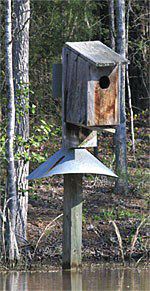 We installed four of these artificial cavities on tall poles around the perimeter of Hilton Pond and placed the other two on what we call "Nothilton Pond"--another impoundment partly on the property. Each box is used almost every spring by Wood Ducks, and when a duckling family moves out (above) other species such as
We installed four of these artificial cavities on tall poles around the perimeter of Hilton Pond and placed the other two on what we call "Nothilton Pond"--another impoundment partly on the property. Each box is used almost every spring by Wood Ducks, and when a duckling family moves out (above) other species such as 
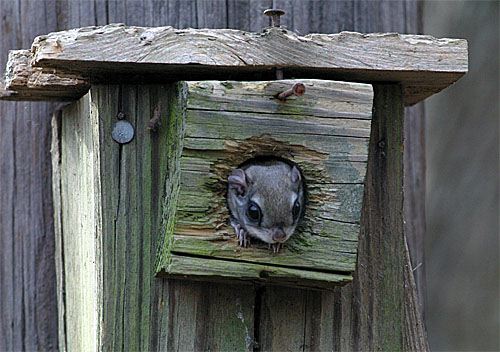
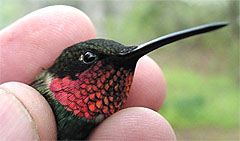 In mid-March we break out the rest of our feeder arsenal and hang them in obvious locations, aiming to bring in the first spring migrant Ruby-throated Hummingbird. Our earliest ever RTHU was a male on 27 March, so we always suggest folks in the Carolina Piedmont hang their first feeder(s) by St. Patrick's Day. (People from further north will probably hang feeders at a later date.) Don't fill spring feeders all the way, however; that early in the season there won't be enough hummers to drain the sugar water before it goes bad.
In mid-March we break out the rest of our feeder arsenal and hang them in obvious locations, aiming to bring in the first spring migrant Ruby-throated Hummingbird. Our earliest ever RTHU was a male on 27 March, so we always suggest folks in the Carolina Piedmont hang their first feeder(s) by St. Patrick's Day. (People from further north will probably hang feeders at a later date.) Don't fill spring feeders all the way, however; that early in the season there won't be enough hummers to drain the sugar water before it goes bad.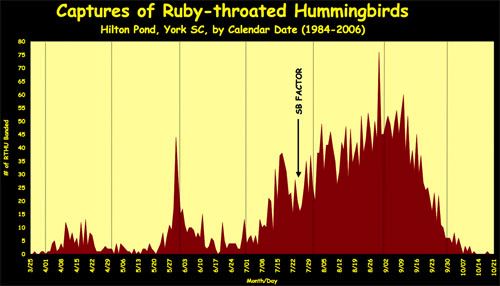
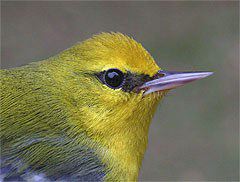 here at Hilton Pond Center we celebrate by running our full complement of mist nets and banding as many migrants as possible in the hope of learning where they go to nest. We're rewarded by birds in breeding plumage we seldom see at other times of the year: Rose-breasted Grosbeak, Scarlet Tanager, Northern Oriole, and a diverse assemblage of Wood Warblers such as the male Blue-winged Warbler (above left).
here at Hilton Pond Center we celebrate by running our full complement of mist nets and banding as many migrants as possible in the hope of learning where they go to nest. We're rewarded by birds in breeding plumage we seldom see at other times of the year: Rose-breasted Grosbeak, Scarlet Tanager, Northern Oriole, and a diverse assemblage of Wood Warblers such as the male Blue-winged Warbler (above left).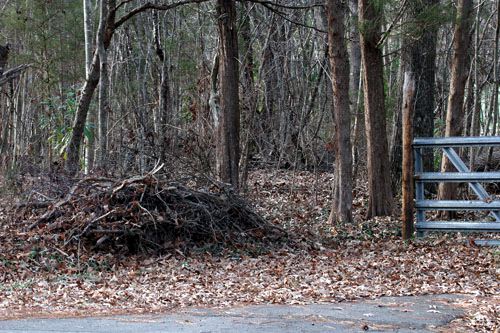
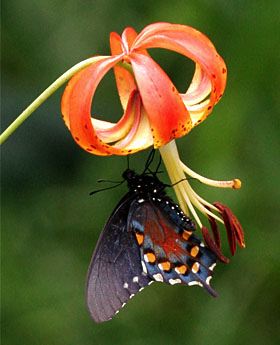 Historically a tough ticket to get, the conference is now open to a much larger audience of folks interested in protecting and propagating plants native to the Appalachians, Piedmont, and Coastal Plain. The 2007 meeting will be 18-21 July and include the usual mix of formal lectures and informal workshops.
Historically a tough ticket to get, the conference is now open to a much larger audience of folks interested in protecting and propagating plants native to the Appalachians, Piedmont, and Coastal Plain. The 2007 meeting will be 18-21 July and include the usual mix of formal lectures and informal workshops. 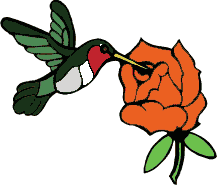 which is when we capture and band the vast majority of our hummers at Hilton Pond Center (see chart above under April). This is also when we offer our annual
which is when we capture and band the vast majority of our hummers at Hilton Pond Center (see chart above under April). This is also when we offer our annual 
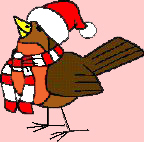 Hilton Pond Center falls within the circle for the
Hilton Pond Center falls within the circle for the 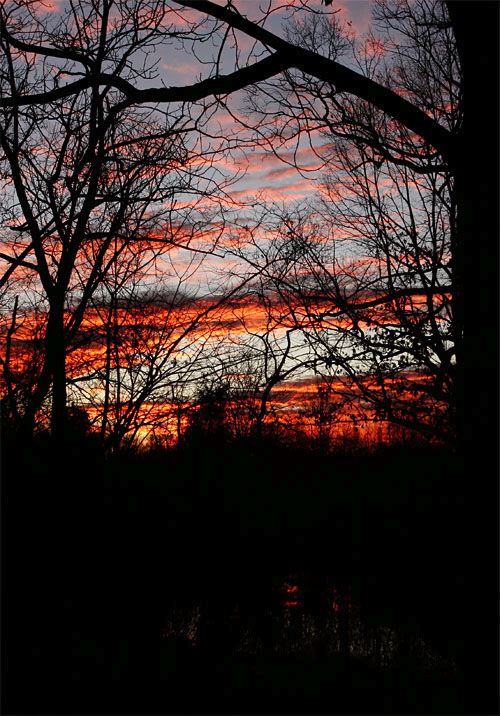


 Oct 15 to Mar 15
Oct 15 to Mar 15
